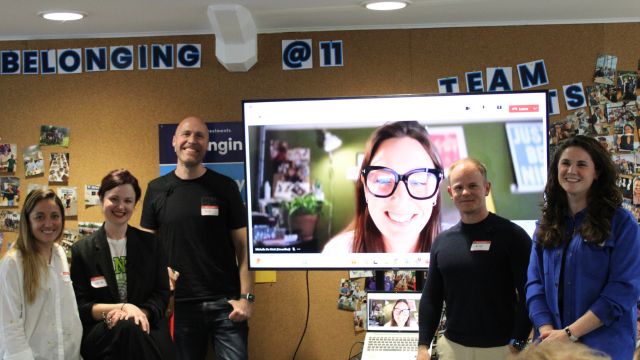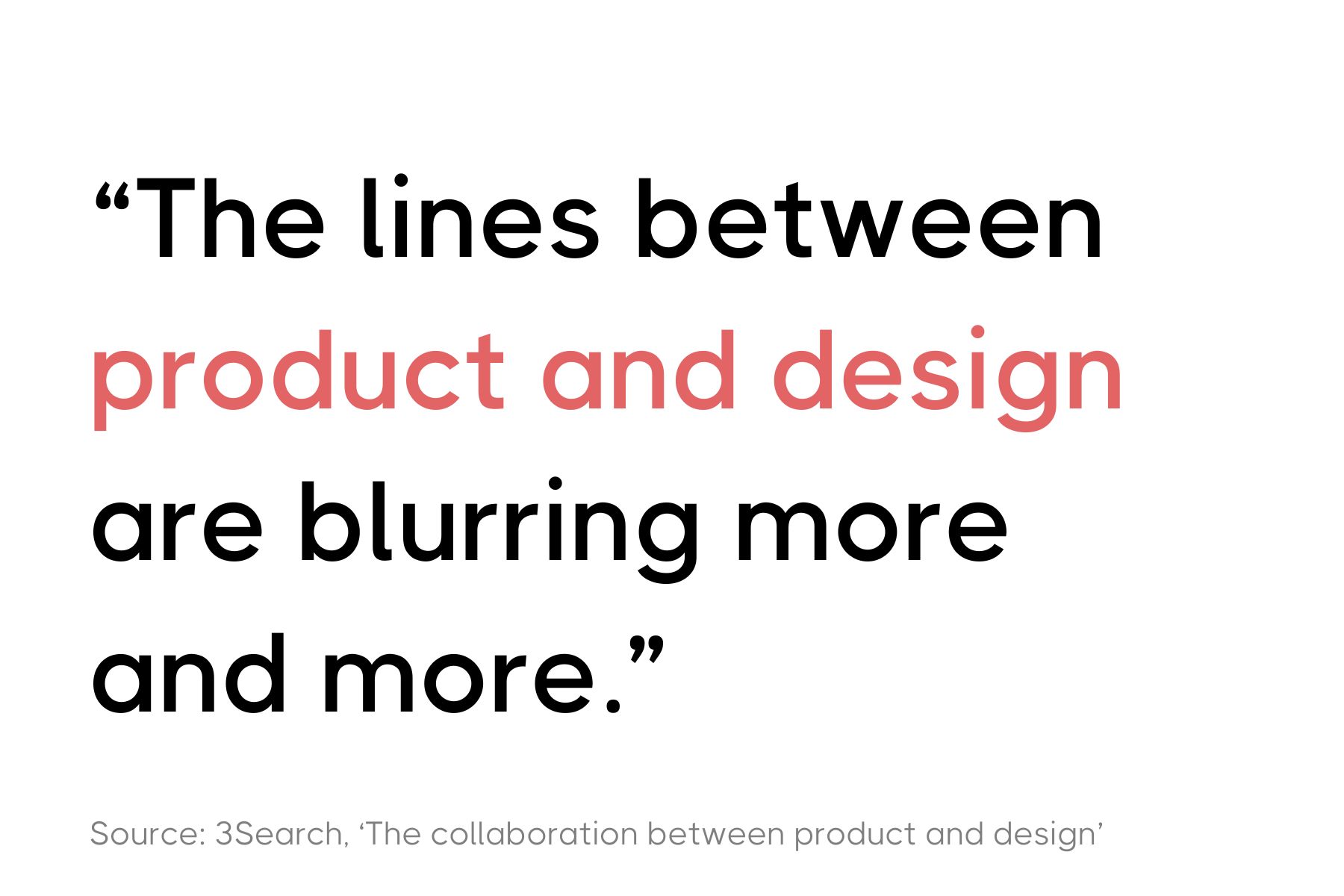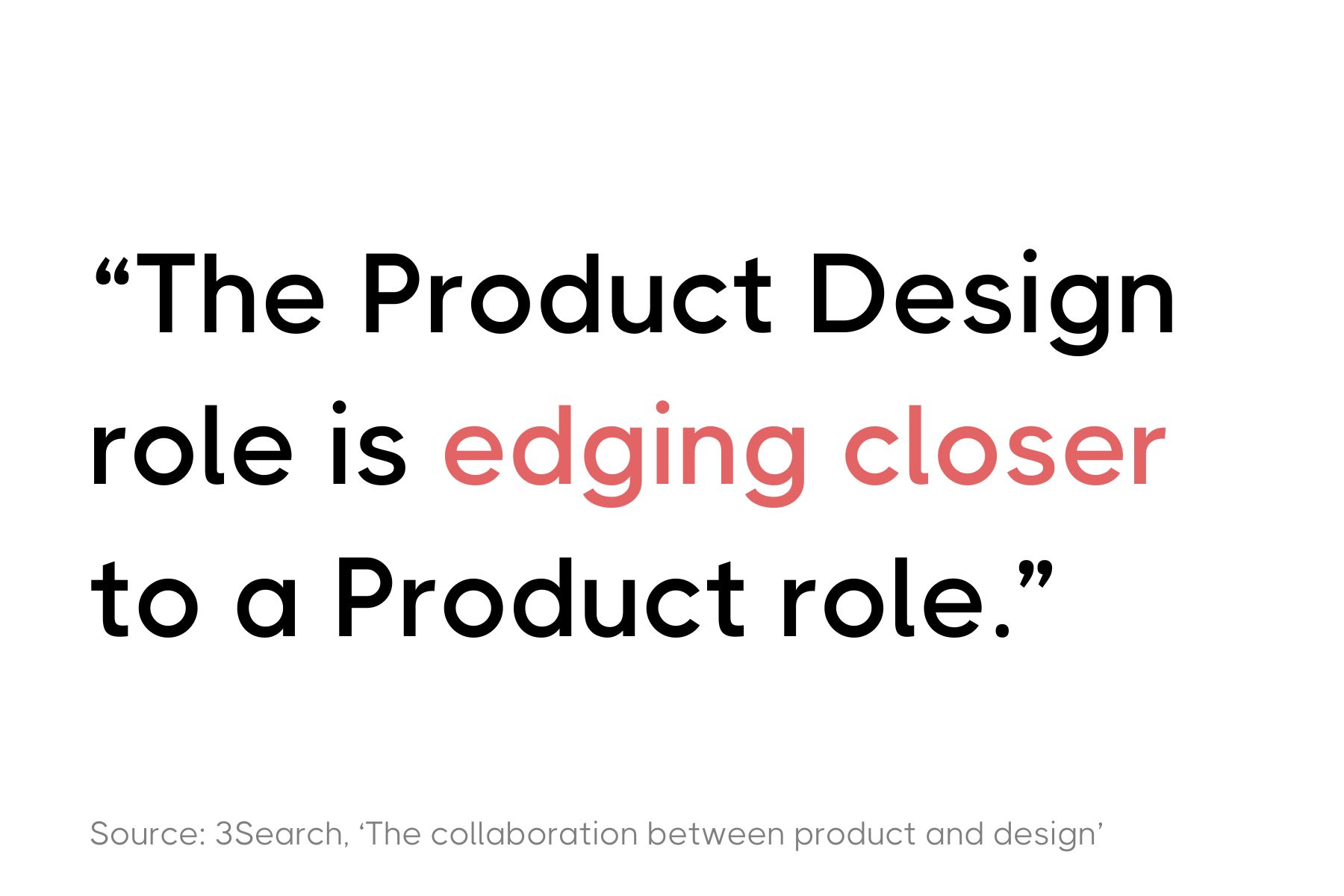Upload Your CV
Send us your CV and a member of the team will be in touch to discuss open opportunities with you.
Product and design teams share one goal – creating successful products that solve cust...

Product and design teams share one goal – creating successful products that solve customers’ problems. Collaboration has never been more important for product and design success.

In our first Product and Design Collab event, we brought together professionals from each arena to learn, empathise, and collaborate.
And expertly moderated by Rico Surridge. Rico is Chief Product & Technology Officer at Which? Ltd, the UK’s consumer champion. Over a twenty-year career, Rico has driven outcomes from Product roles in industries ranging from Media (BBC, ITV, Sky, NewsCorp) to ecommerce (Sainsbury's, Vodafone, Photobox) to Consultancy (Accenture). Collaborating on product and feature launches with Apple, Google and Amazon.
Looking for more? Watch the on-demand video.
The perception of product management and design has changed over the years, usually in-line with the economy. Our speakers agreed that a few years ago, teams were over-equipped with both Product Managers and Product Designers. As a new skill set, however, businesses were often unsure of the benefits of Product. Unfortunately, while businesses are becoming more product-led, there is less budget to hire enough heads to create an effective team.
“Now, we have to hire for efficiency against really specific goals,” says Louise, “so it’s about being really pragmatic about the skill sets.”
Michelle shared that in a previous role, despite working to create optimised Products that their customers loved, they still lacked Product Market Fit (PMF).
Customer data and user feedback helped the team to pivot and become “laser focussed”. This insight allowed them to re-focus their product roadmap on where they would see the highest return on investment and create PMF.
The design career path has certainly transformed. The Product Design roles have only recently been introduced and really encompass both skill sets. In fact, Louise shared that the two are only continuing to become more and more intertwined.

In Louise’s opinion, this is a necessary change to continue building products together. To adapt, Designers need to be able to understand business landscape, product thinking and commerciality. These aspects are increasingly attractive to hiring managers.
Unfortunately, the current employment market is competitive and saturated. To stand out from the crowd, Louise recommends Designers approach their job search with a business lens. Product-thinking can be the differentiator. As she said, "Our strength is in design, but our superpower is all of it.”
In this economic environment, strong collaboration is key for business success and individual team success.
When product, design and engineering teams work closely together, they create products that are truly successful with their audience. A well-coordinated team with clear goals ensures higher team satisfaction and stronger product quality.
Richard shared that, historically, tensions were high between each team but that has now changed.
“The attribution of product and design is much harder,” says Richard, "and they must work together to justify a product-centric approach."
As stated above, in this economic environment, proving your team’s worth is key as a Product/Design Leader. To achieve this, Michelle advises sharing one target to hit. This simple, clear approach makes it easier to communicate your teams’ collective successes with business leaders.
As mentioned, collaborative working can be tricky to achieve. Complications arise from working models and structures. Our speakers shared some of the ways you can ensure collaboration between design and product teams.
A common trap that teams fall into, is isolating Designers from the product development process. This should be avoided at all costs so that Designers can continue to drive Product success and always demonstrate their value to the business.
Keeping your focus on how your work drives success is key in the current climate.
Collaboration has been impacted by the current working environment. Remote working has impacted the visibility of teams and made it harder to share ideas in a collaborative environment.

To combat this disconnect, Rich shared the importance of maintaining consistent documentation in your role.
For instance, asking questions when you’re not clear on the outcomes of conversations. He suggested breaking down the message that you’ve received and what you understand from it to share your perspective with the individual.
The issue is often wider than at team-level, with many businesses finding it harder than ever to clearly communicate expectations to their teams. As a result, alignment is difficult to achieve, and Product Managers can find it tricky to know which metrics to track.
Rich recommends keeping clear records of all of the metrics you’re impacting to ensure alignment is in place.
Another point touched upon is maintaining team morale for high productivity. Our speakers shared how important internal communications channels are for sharing teams’ successes. For example, creating a Slack channel dedicated to sharing wins, allows you to celebrate achievements on a daily basis.
We appreciate the time and insights shared and look forward to hosting more Product x Design collab events over the next few years. If you’re interested in joining us at our next one, be sure to register your interest below.
Ready to pursue Product-led growth in your organisation? Get in touch with our expert recruiters for support with your hiring needs. As the leading digital and marketing recruitment agency, we promise to deliver the best recruitment experience you will ever have.